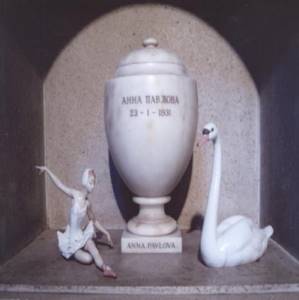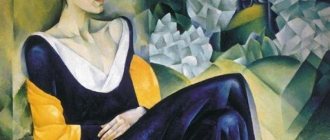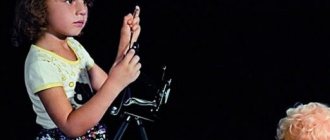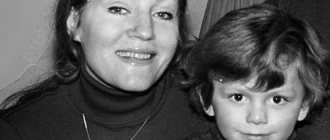Anna Pavlova - biography
Anna Pavlova is the founder of Russian ballet, a dancer whom the whole world knew.
She spoke the language of ballet. Anna Pavlovna could make even someone who did not understand and did not consider ballet an art fall in love with dance. Anna was not accepted into the school the first time: at eight years old, the girl was small and pale and looked too weak to study. Nyurochka was born prematurely (the midwife did not hope that the baby would survive), she was often sick in childhood, so for the summer the small family moved to St. Petersburg, to live with their grandmother. The latter taught the girl to read and write, handicrafts and generously treated her to simple village delicacies, hoping that the baby would get stronger faster with milk and sour cream. At this time she had a dream - to become a ballerina.
Anna Pavlova was friends with Alexander Vertinsky
In 1925, Vertinsky moved to Paris, where he lived for a little less than 10 years. Over the years, he managed to meet and become friends with many Russian celebrities, including Anna Pavlova. Sometimes they had dinner together, and once the singer taught the ballerina to dance tango. Pavlova and Vertinsky had frank conversations:
We talked about England. She talked about her house in London, about her park, about the pond with swans, about the lawn, which is mowed twice a week... And suddenly she fell silent. —Are you homesick for Russia? - I asked quietly. - Terrible, my friend, terrible! To the point of insomnia, to tears, to headaches, to despair - I miss you! “I’m freezing in this cold and foreign country,” she said quietly. “Without hesitation, I would give everything for a small dacha with our Russian grass and birch trees somewhere near Moscow or Petrograd.”
Alexander Vertinsky. "The Long Road…"
Childhood and youth, family
Anya saw the light in a village near the northern capital in February 1881. She spent her childhood in the capital, in a squalid wooden house, where she lived with her mother, Lyubov Fedorovna Pavlova, who did day labor, most often washing clothes. Little Nyura did not remember her father: she was told that he died when her daughter was not even two years old. According to his mother, Matvey Pavlov was a retired soldier; he gave the girl his last and patronymic names.
However, the true story of Anna’s origins remained unclear: later, when Pavlova had already become a famous artist, there were rumors that she owed her birth to a certain wealthy man in whose house her mother worked.
The name was mentioned of Lazar Polyakov, a Moscow banker. Later, the dancer’s biographers proposed another version: the girl was the daughter of a native of Yevpatoria, Shabetai Shamash, who lived in St. Petersburg under the Russian name Matvey and owned a laundry. One way or another, Pavlova never liked to remember this: in those days when she was a child, the stigma of “illegitimate” practically deprived a person of a future. Needless to say, neither she nor her mother sought to make the truth public. When her career took off, the ballerina completely changed her middle name (for the sake of stage euphony, of course!), becoming Anna Pavlovna.
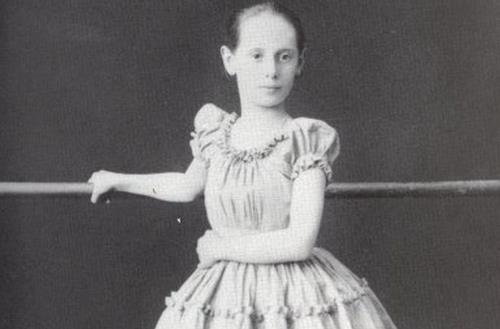
The riddle remained a riddle, and a simple washerwoman grew up with a black-eyed and graceful daughter, displaying obvious musicality and sensitivity to the arts. According to the documents, the child was considered completely “legitimate” (perhaps the real father helped with this); The Pavlovs lived through the labors of Lyubov Fedorovna. Mother still worked “for people”, in addition, she completed sewing courses and sewed to order. The clientele was not rich, and it was difficult to make ends meet.
Anna Pavlova wrote later: “My first memory is a small house in St. Petersburg, where my mother and I lived alone... We were poor, very poor.”
Anna’s childhood cannot be called rich in impressions: walks in the vicinity of Ligov to the sound of pine trees and the splash of a small river, grandmother’s garden, winter slides. However, Anna’s caring mother still managed to find funds for little children’s joys. Memories of this invariably awakened a feeling of gratitude in my daughter. “When I was eight years old, my mother announced to me that we would go to the Mariinsky Theater”
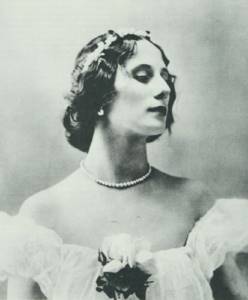
The theater made an indelible impression on Anna. The whole trip was accompanied by a feeling of celebration: the journey in a cab, the solemn colonnade of a building that looked like a fairy-tale palace, brightly lit staircases, a hall full of elegant people - everything delighted eight-year-old Nyurochka, who was not spoiled by entertainment. However, the biggest shock was the ballet itself. That day they showed “Sleeping Beauty”.
In her biographical notes, Pavlova wrote: “A few more minutes - and an unknown world opened up before me. From the very first notes of the orchestra, I trembled all over... The curtain rose, revealing the gilded hall of the palace, I quietly screamed with joy...”
From that day on, Anna literally dreamed of ballet and begged her mother to take her to the entrance exams of the ballet department at the theater school. To the surprise of the future dancer, the examiners were interested not so much in her knowledge as in her physical form. The requirements turned out to be harsh; It is no coincidence that Pavlova was not accepted into the school right away. Applicants who were stooped, short-sighted or weak-hearted were eliminated.
After completing all the exams (which included not only tests in writing, reading and arithmetic, but also a thorough test of musical ear), out of sixty girls, only eleven were accepted into the school, and Pavlova was among them! “I was crazy with delight when the director promised to enroll me as a student,” she recalled as an adult.
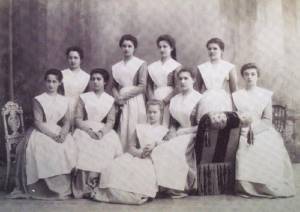
Anna now returned home only for the holidays, where, despite the joy of meeting her mother, to whom she always felt tender affection, she missed school. Only there did she feel that she was living life to the fullest; everything there made her happy: school, music and the true magic called creativity. Her comrades on the theater stage were waiting there - after all, many of those who were destined to glorify Russian ballet studied at the same time as the future ballerina.
Rise to Fame
The successful career of the Russian ballerina developed rapidly. The young talented ballerina captivated the audience and all her colleagues; she had no equal.
- In 1906, she sang the role of the Queen of Grape Wines in The Grapevine .
- In 1907, she performed the choreographic miniature “Swan” , later known as “The Dying Swan” . In the same year she danced Acteia in Eunika and La Sylphide in Chopiniana .
- In 1908, she performed the role of Verenika in Egyptian Nights .
- In 1908 - the first foreign tour of Europe with partner Adolf Bolm.
- In 1909 - the part of Armida in the Armida Pavilion , Taor in Cleopatra .
- In 1910, she left the Mariinsky Theater and began to enter into her own contracts abroad. In London she performed the main role in Giselle.
- In 1910 she performed for a month on the stage of the New York Metropolitan Opera. Toured in Baltimore, Boston, Philadelphia.
- In 1911, she took part in a tour of England, Ireland and Scotland with her partner L. Novikov.
- In 1913 - last performance on the stage of the Mariinsky Theater .
- From 1922 to 1929, she toured the world’s best stages in Japan, China, Australia, India, South America, New Zealand, Egypt, Singapore and many others. etc.
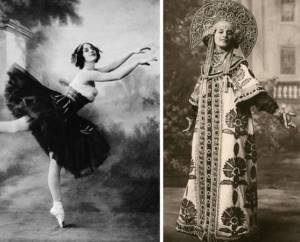
During her travels, Pavlova often visited dance schools and helped many talented dancers break onto the big stage, such as Tamara Tumanova , later a famous actress and choreographer who made a career in Diaghilev's troupe in Monte Carlo.
Pavlova's success abroad was facilitated by the famous Russian impresario Sergei Diaghilev . He organized Russian seasons in France, and Diaghilev added a ballet with the participation of Anna Pavlova to the opera numbers. The European public immediately appreciated Russian ballet art, and Pavlova found herself in an aura of world fame . Posters with a portrait of Pavlova in the image of a swan, works by the artist Valentin Serov, were the emblem of the festival organized by S. Diaghilev.
In 1914, the Russian ballerina finally settled in England and never returned to Russia. At the beginning of World War I, Anna organized performances in favor of the Red Cross , and after the war she sent all the proceeds to Russia for needy artists in Moscow and St. Petersburg. The great Russian ballerina never forgot about her homeland and always wanted to return.
In 1927 on stage in London
Ballet career
Beauty, simplicity and grace - this is what Petipa sought in his productions, which were strikingly different from European choreographic experiments in which technique dominated over content.
It was this principle that formed the basis of the Russian ballet school, glorified by such outstanding artists as Pavlova. Successful completion of college increased the graduates' chances for a successful career. Pavlova was lucky: she and her classmates received the right to make an open debut on the stage of the Mariinsky Theater. Pavlova's debut performances were very successful - her dance was appreciated not only by her mentors, but also by the audience. A start had been made: the promising dancer was immediately enrolled as a luminary, considering the graduate’s talent too bright for the corps de ballet. On the stage of the Mariinsky Theater, Anna had to master the achievements of the classical repertoire and create her own, reflecting not only her creative individuality, but also the elusive, exciting spirit of the new era. The technical part of the dance turned out to be the most difficult for Pavlova; the debutante coped with the artistic part much easier. While rehearsing the fairy Lily of the Valley in the ballet “The Sleeping Beauty,” Anna had her feet bleeding, practicing the elements invented by Petipa, but she was not going to give up. Roles in The Awakening of Flora, Paquita, and The Magic Flute gave the aspiring ballerina the necessary experience in mastering classical choreography.
Thanks to the support of her old teacher Evgenia Pavlovna Sokolova, who worked at the Mariinsky, Anna began preparing solo parts in the ballets “La Bayadère”, “Giselle”, “Naiad and the Fisherman”. Participation in these performances was highly appreciated by both the audience and the theater management: already in 1903, the ballerina received the position of “first soloist” with a salary of 1,800 rubles per year.
In 1905, Pavlova received the title of ballerina - she could rightfully be proud of herself. A very young dancer, the girl was at the peak of her creative and physical powers and was ready for new achievements. There was only one thing left to do: it was necessary to find suitable choreographic material that fully corresponded to the capabilities and talents of the rising star.
The muse of dance Terpsichore again showed favor to Pavlova: fate brought her together with Mikhail Fokin, who was to become one of the most outstanding choreographers of the early 20th century. In fact, they had known each other for a long time - they studied together (Misha was older), performed on the same stage and were partners in many ballets. Fokine's choreographic ideas were seriously different from the classical style adopted in the academic theater; his productions had many critics, but in his creative style there was something felt that was absolutely in tune with Pavlova's talent.
Anna Pavlova's first foreign tour took place in the summer of 1907, it was a tour of Northern Europe. The small troupe presented a small program - a choreographic divertissement, consisting of separate numbers. The recognition of the European public, who highly valued the classics, deeply touched the young performer.
From now on, Pavlova saw a special mission in her work - to introduce foreign ballet fans to Russian achievements. It so happened that the ballerina’s participation in the famous “Russian Seasons” became a rather insignificant episode in her career. Meanwhile, this grandiose project, organized by Sergei Diaghilev, had a wide resonance in European cultural life.
After her first foreign tour and participation in the Russian Seasons, Pavlova found herself in great demand abroad: the growing popularity of Russian ballet contributed to the conclusion of new contracts. The audience of admirers of the ballerina expanded every year, tours in the USA and Great Britain played a significant role in this. The audience at the Metropolitan Opera in New York and London's Palace Theater applauded Anna Pavlovna's performances with equal enthusiasm.
Contemporaries left quite a lot of evidence about the famous ballerina: Anna was so famous and revered during her lifetime that her biographers have very rich material. According to most colleagues in the artistic workshop, fate generously gifted Pavlova - from birth she was lucky enough to become the owner of unique qualities that formed the foundation of her skill.
Pavlova was already noticed at student performances, and the ballerina’s new roles never went unnoticed by critics. At first, the ballerina was seen only as a talented continuer of the classical tradition. After the premiere of Chopiniana, Anna seemed to have her reputation as an academic dancer forever established.
By the time it became clear not only to Russian but also to foreign reporters that “Pavlova is not an artist, but a phenomenon,” many critics tried to figure out the formula for her artistic talent. Often words were powerless here. It was her stage colleagues who left the most detailed reviews of her work. Taking into account the competition and difficult atmosphere of the artistic world, you can trust their objectivity, given that the opinions of a variety of people are almost unanimous.
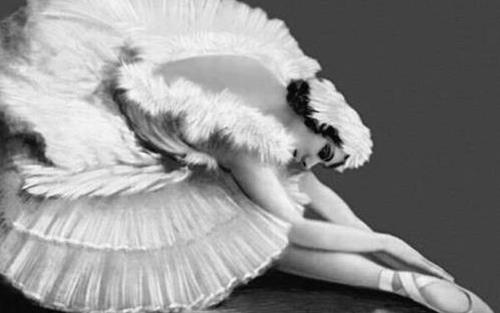
Pavlova’s style was so individual that it is impossible to confuse her with any of her contemporaries, just as it is impossible to teach one of them to dance “Pavlovian style.” As for the personal qualities of Anna Pavlovna, a very contradictory picture emerges from the evidence of her contemporaries. To outsiders, she gave the impression of a withdrawn and self-absorbed person, as if living according to her own internal clock. From her youth she loved music and reading - these activities nourished her spirit and gave birth to artistic associations that were so necessary in her work.
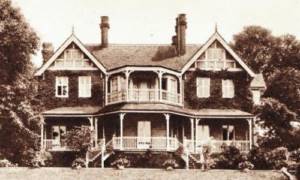
In her house, Pavlova received guests, gave lessons and rehearsed. Few managed to adapt to her work style. Natalya Trukhanova, a friend of Anna’s, who observed her usual daily exercises, could not hide her surprise: Pavlova performed the usual set of exercises three times faster than any of the famous dancers, but at the end of the program she literally fell into a chair in exhaustion. It was her own rhythm - the ballerina was famous for her ability to quickly master choreographic material.
The speed with which Anna perceived the impressions of the world around her required constant renewal of life. Traveling around the Old and New Worlds added dynamism and festivity to existence: the ballerina met new admirers of her talent, admired unprecedented landscapes, and became acquainted with other cultures.
It was no coincidence that the sharp-tongued press dubbed the dancer “Terpsichore of packet boats,” hinting at her endless travels across the seas and oceans. It seemed that there was not a single corner of the world left on the map where the famous ballerina had performed. Over twenty-two years of touring, Anna Pavlovna performed more than nine thousand performances in forty-four countries. USA, Canada, Mexico, Japan, Philippines, India, Egypt, South Africa, Australia, New Zealand - thanks to Pavlova, audiences around the world became acquainted with the traditions of Russian classical ballet.
Pavlova Anna Pavlovna
Anna Pavlovna Pavlova , one of the greatest ballerinas of the twentieth century, was born on February 12, 1881 in St. Petersburg. Her mother Lyubov Fedorovna was a maid for Lazar Solomonovich Polyakov, an influential Jewish banker. When the maid carried the illegitimate child of a businessman, then, in order not to harm his reputation, the girl was married to the peasant Matvey Pavlovich Pavlov, a retired soldier of the Preobrazhensky Regiment.
The girl was born prematurely and had poor health as a child. A few years later, her official father Pavlov died. The mother, the owner of a laundry, and her daughter lived in the holiday village of Ligovo near St. Petersburg in their own wooden house. Staying in nature and fresh air improved Anna’s health, and she began to get sick less often. One day Lyubov Fedorovna brought her daughter to the Mariinsky Theater to see the ballet “The Sleeping Beauty”. After seeing the performance, the girl realized: she wanted to become a ballerina.
An 8-year-old girl was not accepted into the Imperial Theater School. But she, graceful and airy, passed the exams again and again, and in 1891 she was enrolled. Soon the gifted student became the favorite of teachers Ekaterina Vazem and Alexander Oblakov. Without sparing herself, she trained 8 hours a day, striving to be the best. During these years, the name “Pavlova-2” was assigned to her, so as not to be confused with the ballerina of the same name, whom Anna soon surpassed in skill and celebrity.
In 1899, the young artist graduated from ballet school with the title of first dancer and was accepted into the Mariinsky Theater, where she began working under the direction of choreographer Marius Petipa. Pavlova did not dance in the corps de ballet - she immediately received solo parts. In September 1899, she made her debut in the ballet “A Vain Precaution,” in which she performed a pas de trois. Then there were the ballets “Giselle”, “The Sleeping Beauty”, “King Kandavle”, “Camargo” and others.
In 1902, she danced her first ballerina role, playing Nikia in the production of La Bayadère. The ballerina liked not only classical, but also character dances: the Ural dance in “The Little Humpbacked Horse,” panaderos in “Raymond,” fandango in “Carmen.” In the ballet "Egyptian Nights" she performed a dance with a live snake. In the theater, the dancer worked with choreographers Alexander Gorsky and Mikhail Fokin, who helped to more fully reveal the facets of her extraordinary talent.
Ballet dancer Fyodor Lopukhov said that in appearance Anna looked like a Jew, but had a Russian soul. The ballerina was gifted with extraordinary lightness - she seemed to flutter in the air. She was called the very embodiment of the muse of dance Terpsichore. Expressive movements, airiness and elevations (soaring, long jumps) delighted the audience. Dancer and teacher Tamara Karsavina wrote that in the dance it seemed as if there was no more flesh in Pavlova than in a snowflake.
One of her stage partners, Lavrenty Novikov, recalled that the dancer had great personal charm, and any part she performed amazed the audience. The artist did not do anything innovative or sensational - she herself was a sensation. In 1906, Anna Pavlova received the title of ballerina, which was awarded to only a few dancers in Russia - among them were Matilda Kshesinskaya, Olga Preobrazhenskaya, Tamara Karsavina.
In 1907, at the Mariinsky Theater, the artist first performed the miniature “Swan” from the suite “Carnival of Animals,” choreographed by choreographer Mikhail Fokin. The dance became famous under the name “The Dying Swan” and forever became a symbol of Russian ballet of the 20th century. The miniature was the ballerina’s calling card – she performed it 4,000 times. The press wrote that the dancer in it is like a cloud hovering above the earth, she seems to be floating across the stage.
Composer Charles-Camille Saint-Saëns, who composed the music for the production, was delighted with the performance and amazed by the interpretation of the image, because his play was written in a major key, in which the swan does not die. But Pavlova was able to turn swan serenity into tragedy. The poster for the ballet was drawn by the famous portrait painter Valentin Serov. It took 11 sessions to create - the ballerina had to constantly perform an arabesque so that the artist could capture this fleeting movement.
In Paris in 1909, the artist participated in Sergei Diaghilev’s “Russian Seasons,” for which Serov’s poster was chosen as the emblem. Pavlova danced in the ballets Cleopatra, La Sylphide and Armida's Pavilion. Ballet dancer Sergei Grigoriev wrote that in them she was airy and unearthly - the very embodiment of romantic ballet. After the first season, the dancer received the degree of Commander of the Order of Academic Palms. In 1911 in London she played the main role in Giselle.
Then Anna Pavlova created her own troupe, which has an extensive repertoire and a busy performance schedule. In 1909, the ballerina began to independently compose lyrical miniatures, which in terms of drama and artistic value were not inferior to the masterpieces of Mikhail Fokine. They emerged into her own genre, called “choreographic melodic declamation” by theater critic Yuri Belyaev. Among them are “Dragonfly”, “Night”, “California Poppy”, “Butterfly”.
In 1913, the artist danced for the last time at the Mariinsky Theater, and after the outbreak of the First World War in 1914, she left Russia forever and began to live in London. Anna Pavlova's tours throughout the world glorified Russian ballet. With her troupe she visited over 40 countries - she performed in Germany, Sweden, USA, China, Japan, India, Australia, New Zealand. In many countries visited by the dancer, audiences saw ballet for the first time.
The legendary Anna Pavlova was the highest paid ballerina of her time. She set fashion and inspired poets, she was immortalized in portraits, royal receptions were organized in her honor, varieties of flowers, confectionery and airplanes were named. Ballet critic Andrei Levinson noted that the art of this brilliant dancer is born and dies with her, because in order to dance like Pavlova, you need to be Pavlova herself.
However, the personal life of the great artist was not smooth. She rejected obsessive fans, did not accept their gifts, and did not hold out hope for light romances. There was only one man in her life - a wealthy nobleman, State Councilor Victor Dandre (1870 - 1944), whom she met in 1904. The gallant, educated, witty aristocrat won the girl’s heart. He rented a luxurious apartment for her with a large dance hall and presented her with jewelry.
But his high position did not allow him to marry the daughter of a peasant and a washerwoman, a ballerina, who was treated as an accessible woman. She accompanied Dandre to social events, but understood that she would never become his wife. And the proud girl parted with her beloved. During her period of painful loneliness, Mikhail Fokin choreographed the dance “The Dying Swan” for her. Working on the performance breathed new life into the ballerina, and the choreographer himself became her good friend.
Foreign tours helped to distract me from difficult experiences. New countries, vivid impressions, memorable performances and... an acquaintance with silent film star Charlie Chaplin awaited her. They liked each other, but their relationship remained platonic. The strong friendship of the two celebrities lasted for many years. Anna became world famous, her fortune increased, she had millions of fans, but at the same time she was desperately lonely.
Suddenly she found out that Victor Dandre had gone bankrupt and was in debtor's prison. To help her loved one, she entered into an agreement with the Braff agency, according to which she had to perform twice daily. The contract involved exhausting work, but brought her great benefits. Soon she collected the required amount and paid off the debts of Dandre, who, having freed himself, went abroad to join her. According to some reports, in 1911 the lovers secretly got married in Paris.
They began to live in Great Britain. The ballerina acquired a luxurious estate and her own chamber theater. But their life together was not easy. The talented artist was an emotional person who could not contain her irritation. There was a lot of excitement at the performances, and the accumulated stress poured out at home. There were often scandals, hysterics, and breaking of dishes in the family. To help Anna cope with the theater, Dandre himself took on organizational issues and became an impresario.
In January 1931, Anna Pavlova was rehearsing in a cold room and caught a cold, but did not attach any importance to it. Having gone on a tour to The Hague (Netherlands) with her ballet troupe, she felt very unwell. Doctors determined the presence of fluid in the lungs and recommended urgent surgery. But time was already lost, and the woman fell into oblivion. Having briefly recovered before her death, Pavlova asked: “Get my swan costume ready!”
On January 23, 1931, a terrible loss befell the ballet world - the famous Anna Pavlova, one of the best ballerinas of the 20th century, passed away. The cause of death of the star dancer was purulent pleurisy. Her body was cremated and an urn containing her ashes was placed in the London indoor columbarium at Golders Green Crematorium. 13 years later, in 1944, an urn with the ashes of her husband Victor Dandre, with whom she lived together for 20 years, stood next to her.
Personal life
Anna Pavlova is the founder of Russian ballet, a dancer whom the whole world knew.
She spoke the language of ballet. Anna Pavlovna could make even someone who did not understand and did not consider ballet an art fall in love with dance. To outsiders, especially if it did not happen on stage, Anna Pavlova sometimes gave the impression of a withdrawn and unfriendly person, but upon closer acquaintance, both her emotionality and temperament were revealed. One of the happy qualities of the ballerina’s character was the ability to quickly switch: she did not harbor grudges, quickly forgot conflicts and did not lose the ability to enjoy life. All this made her a charming woman. In addition, the dancer had a spectacular appearance.
Baron Victor Dandre knew Pavlova for many years. A friend of Marius Petipa, he had a reputation as an admirer of the arts and a regular at theater boxes. The long-term courtship of a delicate admirer (who was ten years older than her) eventually had an effect: Anna reciprocated Dandre’s love. For his girlfriend, the baron rented a luxurious apartment on Ofitserskaya Street (with its own rehearsal hall), where he became a frequent guest. Those around him were accustomed to seeing him next to Anna, but, of course, there could be no talk of legitimizing their relationship: the heir of an aristocratic family was not supposed to marry an artist and the daughter of a washerwoman.
However, he no longer had a family fortune for a long time: Mr. Dandre received a salary in the civil service, performing the duties of a Senate prosecutor and chairman of the Duma Audit Commission. In 1912, a trial was launched against him - Dandre was accused of abuses and bribes, as well as theft from the city treasury. When the court ordered the accused to pay a fine of 36 thousand rubles, the amount was found quite quickly. There is a version that it was collected by Anna, who by that time was actively touring abroad. Dandre himself quickly left the country using forged documents.
From now on, he became an indispensable impresario for Pavlova, or, as the British said, a manager: the baron took upon himself the hassle of organizing her tour. Contacts with the receiving parties (among the representatives of the latter were Max Rabinov, Daniel Meyer and the famous Solomon Yurok), repertoire policy (the troupe’s choreographer-director was I.N. Khlyustin), contracts with new artists - in all these activities Dandre discovered the remarkable talent of an entrepreneur.
In fact, they changed roles: now it was not Anna who depended on him, but Dandre’s own well-being turned out to be connected with her career. Considering the difficult nature of both, their relationship with the ballerina resembled the life of spouses with great experience: there were enough quarrels and reconciliations, as well as irritation, tenderness and mutual care. The only question that biographers doubt is whether they were married? Some sources claim that the couple got married in Russia, others - that the marriage took place in Europe. In the first case, the situation compromised the baron, in the second, it interfered with Anna’s image.
One way or another, it is quite clear that this ceremony, if it really took place, was a secret to everyone around. Ultimately, this ambiguity played a cruel joke on Dandre: after the death of his wife, he could not inherit either her house or money. The only thing left for him is the archives, which allowed him to write a book about his mysterious companion.
The Mystery of Paternity
There are no secrets about Anna Pavlova's mother. The girl's mother, Lyubov Fedorovna, was a simple laundress. But from what father was little Anya born on January 31 (February 12), 1881? According to one version, Lyubov Fedorovna was married to retired soldier Matvey Pavlov. Anya's father died when she was only two years old. But there is also a more spicy version. According to her, the ballerina was the illegitimate daughter of banker Lazar Polyakov.
In Antarctica, the snow changed color and turned into green and crimson
Tolkalina's daughter has changed greatly. How Maria ate to lose 30 kg
There are only a few days left before Nikita Dzhigurda's wedding: he is marrying his ex-wife
Having learned about his mistress's pregnancy, he gave her a payoff, but did not recognize paternity of the child. Where is the truth? On the one hand, Anna often recalled her difficult and poor childhood. But on the other hand, she was taken to the Imperial Ballet School, where training was oh so expensive. The ballerina herself could not stand it when people addressed her by her patronymic. She insisted on being called simply by her first name.
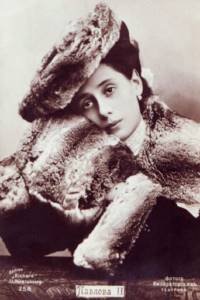
Last years and death
Having become the head of her own troupe, Pavlova was aware of her responsibility for the rest of the dancers.
This group was truly international: it consisted of people from Russia, Poland and Western Europe (many later made solo careers). The affairs of the concert enterprise were kept in almost perfect order: the artists were regularly paid their salaries, were entitled to insurance and bonuses. In January 1931, the train on which Pavlova and her artists were traveling collided with a freight train. The incident did not have any serious consequences, however, while walking to the nearest station, the artist caught a cold. They also said that a heavy trunk fell from the top shelf, hitting Anna painfully in the ribs. Accustomed to pain thanks to her profession, the ballerina soon forgot about what happened and remembered about the injury only during a tour in the Netherlands, surprised that the cold she caught along the way did not go away.
When she became worse, a council of doctors meeting in The Hague noted the development of pleurisy. Doctors suggested surgery, but did not guarantee that after it the dancer would return to the stage. Pavlova refused. On the night of January 22-23, the ballerina died. Thus, the cause of death of the great ballerina was severe pleurisy.
Legend has it that in her last moments she was worried about the upcoming tour, and finally asked: “Bring me a swan costume...”.
The Pavlovsk troupe still went on tour. It was a kind of memorial tour: Anna’s favorite numbers were danced by her colleagues. And only during the performance of “The Dying Swan” was the stage empty: the pattern of Pavlova’s movement was drawn across it with a spotlight.
